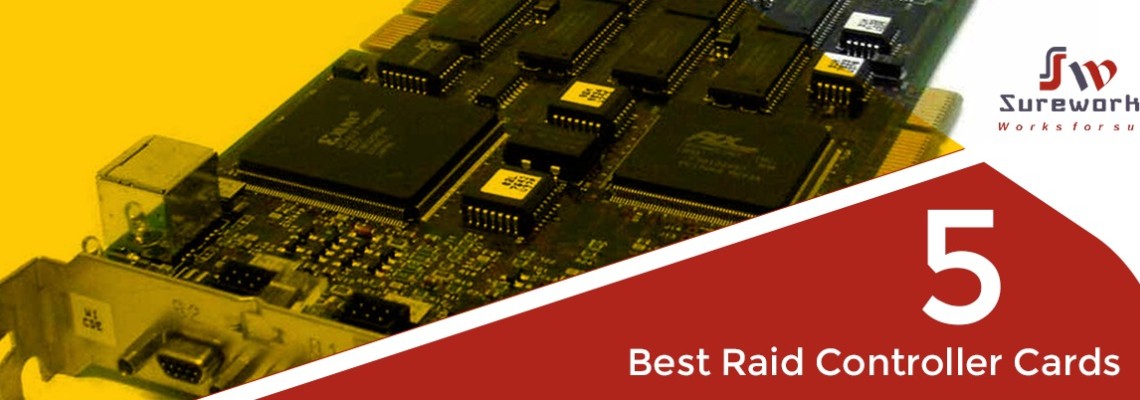
The term RAID refers to redundant arrays of independent disks, and there are multiple types of RAID Controllers in the market.
A RAID system could be either software or raid controller card and virtualize physical storage drives to enhance performance and provide data redundancy.
Controller-based RAID typically means hardware-based RAID in contrast to server-based RAID, a hybrid of software and hardware.
Any Types of RAID Controllers do not function as storage controllers.
Storage controllers present active disks to the Operating System, in contrast, the RAID controller serves as a Server RAM storage cache and offers RAID capabilities.
The RAID controller's setup determines the amount and the identity of RAID disks.

What is a RAID Controller?
The RAID controller can be described as a card or chip placed within the OS and storage drives, typically HDD drives.
RAID offers data redundancy and enhances the performance of hard disk drives.
Most RAID levels provide both. RAID can provide redundancy to SSDs, but it doesn't strengthen SSD performance.
There are Types of RAID Controllers in the market. RAID designed explicitly for Server SSDs can provide redundancy as well as improve performance.
The front-end interface interfaces with the server, typically via an adapter that is host-based (HBA), and the backend connects to and manages the RAID or storage media, typically ATA, SCSI, SATA, SAS, or Fibre Channel.
RAID controllers are classified based on different characteristics like the type of drive, such as SATA or SAS and how many ports it supports, the number of industries they can help, the specific RAID levels.
The interface architecture, and the amount of cache memory that is in the native cache.
This means, for instance, that a controller is designed specifically for the SATA environment, and it won't be compatible with a SAS array of logical units.
It also means a RAID 1 controller cannot be transformed into RAID 10. RAID 10.
Different Types Of RAID Controllers
A RAID controller (redundant array of independent disks) is an autonomous device that allows you to manage multiple drives (HDDs) or solid-state drives (SSDs) within your PC.
It will ensure that your PC runs better and is safer for your data in the event of the loss of your drive.
There are various types of RAID Controllers that provide distinct benefits and functions.
You must choose the RAID system compatible with your reads and writes needs.

Key Types Of RAID Controllers
RAID 0
RAID 0 provides speed, not redundancy, and it makes use of disk striping to distribute data over several drives.
This kind of controller can improve your performance, but it will not secure data in the event of the loss of a dream. If the industry in a raid fails, data loss is inevitable.
RAID 1
RAID 1 offers redundancy, not speed. It makes use of a technique called disk mirroring to keep information.
This procedure requires at least two drives, and the data will be simultaneously saved to both campaigns.
This RAID system protects your data and prevents data loss if either drive is damaged or fails. However, it is slow since the data must be saved or written twice.
RAID 10 or RAID 1+0 or RAID 1+0
RAID 1 offers a combination of redundancy and speed. It is one of the common types of RAID Controllers in the market.
It makes use of a variety of disk stripping as well as disk mirroring. At least four drives are required for this method.
The data is striped across two industries before reflecting a different pair or mirroring and then stripped.
RAID 5
RAID 5 offers an excellent balance of the speed of operation and redundancy. However, it utilizes the method of stripping disks with parity, which requires a minimum of three drives.
The data is then sifted across all industries available, and parity information is added that allows for data reconstruction in a drive failure.
RAID 6
RAID 6 is one of the popular RAID Controllers for increased reliability. It uses two parity stripes that protect the data in the event of two disk failures in the RAID set.
It is mainly utilized to protect data in SATA environments.
In addition to the five RAID systems, there are two different RAID systems.
RAID 3
Raid 3 which uses separate disks to keep the parity information, and RAID 4, which is suitable for only sequential access to data.
The 5 Best RAID Controllers
I/O Crest 4 Port SATA III Controller Card
4 Port RAID Controller Card
Vantec SATA PCIe Raid Controller Card
Seelos SATA Internal Card
High Point RocketRaid 420SGL Controller
I/O Crest 4 Port SATA III Controller Card - Best Budget RAID Controller
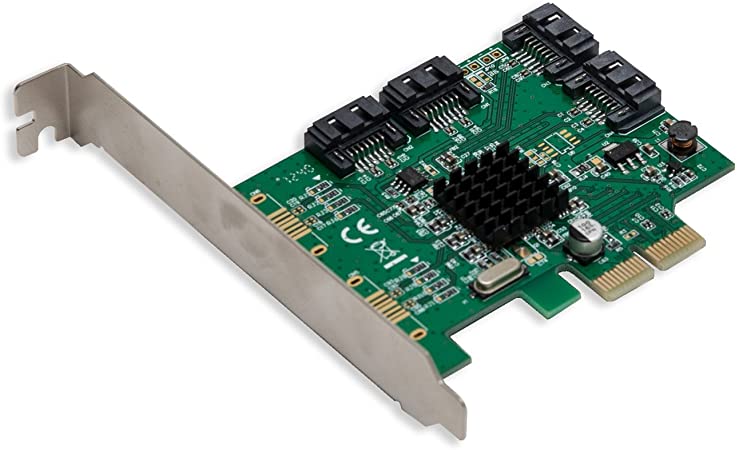
Its I/O Crest SATA III Controller Card is among the most customizable cards available today.
It's based upon the Marvell 88SE9235 controller, among the most commonly used controllers.
The Crest SATA III supports the most recent Version of SATA 3.0. Since it's backward compatible, it is compatible with older SATA devices.
Based on your requirements, It's available with two depending on your needs; it's available from two to SATA ports.
The first RAID configuration has four external ports on the back of the card and additional internal ports of four.
It is connected to the PCIe port that is x2; however, as with every PCIe card, it can be compatible using an x4 or x16 slot.
4 Port RAID Controller Card - Best Value RAID Controller For The Money
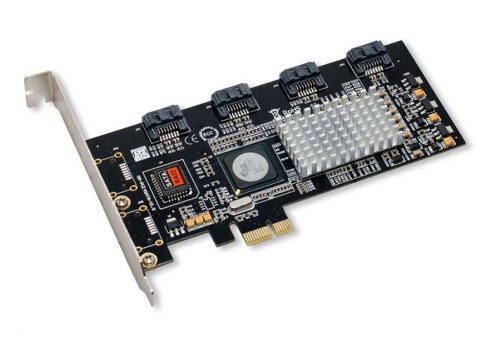
The 4 Port PCIe shares many of the features of I/O Crest; it also has many features shared with I/O Crest; this model offers three different RAID modes.
This 4 Port RAID Controller Card was designed and developed on the chipset of StarTech, and the chip supports all basic SATA features and some additional features.
You can choose up to four SATA ports at once; however, you cannot go beyond four ports at a time. Specific configurations include an mSATA port.
This is a standard connector that smaller SSDs use, and it is compatible with the two versions of RAIS 1.0 and 1+0.
Another striping technology for drives, HyperDuo, combines multiple movements into one.
Vantec SATA PCIe Raid Controller Card - Best Mid Range RAID Controller
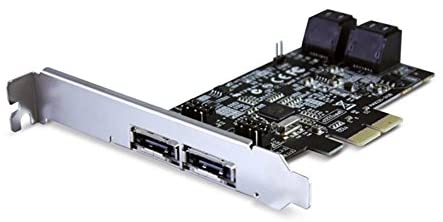
Vantec offers various types of RAID Controllers. However, Vantec is not a well-known company.
However, the Vantec SATA PCIe RAID controller is a fantastic alternative among the most robust raid types solutions.
The controller is equipped with ports that can accommodate six SATA devices. Although it has six ports, only four are connected at once.
However, a FIS switch allows for the ports to be switched on the fly. It supports SATA 3.0 and HyperDuo.
Seelos SATA Internal Card - Best Rated RAID Controller
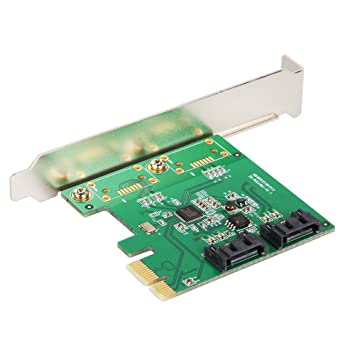
The Seelos SATA allows you to add four independent SATA ports like an ape raid controller.
It's priced well, and, given its cost, it's the ideal card to allow you to enjoy the advantages of the RAID setup. In particular, when you consider the increased speed and security of data.
One of the most important aspects is that the Semlos SATA utilizes a PCI slot and not PCIe. Also, make sure that you have a PCI slot before purchasing this controller.
Because it's a PCI-based card, it can't achieve the same transfer speeds as PCIe, and it's a PCIe card. Seelos SATA will only support transfer speeds of up to 150MB/s.
Plug And Play With Windows 10
Seelos SATA is easy to set up. You have to connect the PCI card onto your server motherboard and connect to the SATA device using the supplied cables.
Since it's plug-and-play with Windows 10 users, you can enjoy the benefits as soon as you click it. If you're a Windows 7 or 8 user, You will have to set up the drives within the DVD.
High Point Rocket Raid 420SGL Controller - Best Premium RAID Controller
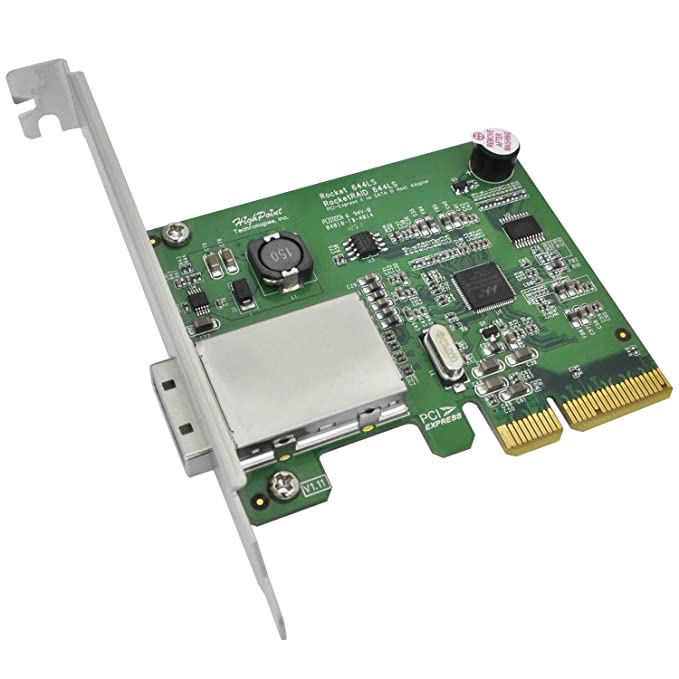
The High-Point Rocket Raid Controller 420SGL is the most expensive controller in this review, and it's also the best RAID controller.
The RocketRaid lets you make the most of the RAID configuration with five different RAID mode options.
The RocketRaid isn't going to be for everyone as the price could be overwhelming, particularly when you consider that many great controllers cost less.
If you're searching for the top RAID controller on the market, the RocketRaid 420SGL is a model you should consider.
An Ideal Choice To Configure Any Storage System
The RocketRaid 420SGL comes with an abundance of features. It is compatible with RAID 1, RAID 0, RAID 5, RAID 10, and JBOD, and it also supports NCQ-Native Command Queuing.
Innovative drives in the array monitoring check your system and inform you of your hard drive and performance status.
It is an excellent feature that will tell you whether there is a problem with one connected drive.
The RocketRaid 420SGL can support up to eight ports and even support SAS 6GB/s. SAS is utilized to help the case when SATA speeds aren't sufficient.

Conclusion
The amount of RAID controllers required is different for each. If you're choosing RAID 5, a minimum of three drivers are needed.
Among other Types of RAID Controllers, RAID 10 and RAID 6 require at least four drives.
These are the minimum numbers these controller cards require to offer adequate capacity for data storage, redundancy, or better performance.
Each RAID controller has advantages, and the Dell r310 raid controller card is one of the most used.
But, the one who performed exceptionally well and enhanced the performance of our test computer was only one of them.
5 Comment(s)
sasa
Tôi cảm thấy rất thoải mái khi chơi tại FB88, họ luôn đem lại một trải nghiệm tuyệt vời.\r\nTôi rất thích trải nghiệm các trò chơi slot tại FB88, phần thưởng rất lớn và hấp dẫn.\r\nTrò chơi trên FB88 rất dễ chơi, quy tắc rõ ràng và dễ hiểu.
LiveBet là một nền tảng giải trí trực tuyến sáng tạo, cung cấp cược thể thao trực tiếp và nhiều tính năng tương tác. Dù bạn là fan của bóng đá, bóng rổ hay các giải đấu eSports, LiveBet đều mang đến cho bạn trải nghiệm cược hấp dẫn. Với hệ thống cập nhật tỷ lệ cược nhanh chóng, bạn có thể cược trong suốt trận đấu và tận dụng mọi cơ hội chiến thắng. Các phương thức thanh toán an toàn và dịch vụ khách hàng 24/7 đảm bảo bạn chơi mà không lo lắng. Tham gia LiveBet ngay hôm nay để trải nghiệm cược trực tuyến tiên tiến nhất!
Trường Tiểu học Nguyễn Trung Trực được thành lập năm 1985 có địa chỉ tại 9A Phạm Hồng Thái, phường Nguyễn Trung Trực, quận Ba Đình, Hà Nội (Nay thành phường Trúc Bạch). Trường hoạt động dưới sự quản lý của UBND quận Ba Đình và Phòng Giáo dục và Đào tạo Ba Đình. Trường được xây dựng khang trang trên diện tích hơn 3000 m2 với đủ các phòng học và phòng chức năng cho các hoạt động học tập, vui chơi, giải trí của học sinh.\r\nĐịa chỉ: Số 9A Phạm Hồng Thái - Ba Đình - Hà Nội\r\nEmail: s666@s666s666s.com\r\nwebsite: Https://s666s666s.com/\r\nĐiện thoại: 438261441
Trường Tiểu học Nguyễn Trung Trực được thành lập năm 1985 có địa chỉ tại 9A Phạm Hồng Thái, phường Nguyễn Trung Trực, quận Ba Đình, Hà Nội (Nay thành phường Trúc Bạch). Trường hoạt động dưới sự quản lý của UBND quận Ba Đình và Phòng Giáo dục và Đào tạo Ba Đình. Trường được xây dựng khang trang trên diện tích hơn 3000 m2 với đủ các phòng học và phòng chức năng cho các hoạt động học tập, vui chơi, giải trí của học sinh.\r\nĐịa chỉ: Số 9A Phạm Hồng Thái - Ba Đình - Hà Nội\r\nEmail: s666@s666s666s.com\r\nwebsite: Https://s666s666s.com/\r\nĐiện thoại: 438261441
Leave a Comment